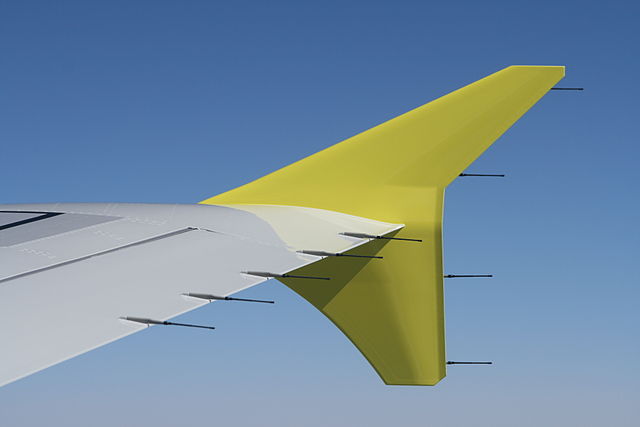The triboelectric effect describes electric charge transfer between two objects when they contact or slide against each other. It can occur with different materials, such as the sole of a shoe on a carpet, or between two pieces of the same material. It is ubiquitous, and occurs with differing amounts of charge transfer (tribocharge) for all solid materials. There is evidence that tribocharging can occur between combinations of solids, liquids and gases, for instance liquid flowing in a solid tube or an aircraft flying through air.
Styrofoam peanuts clinging to a cat's fur due to static electricity.
Generator built by Francis Hauksbee
Static wicks on a Winglet Airbus A319-132
Antistatic belts on a car in Russia in 2014
Static electricity is an imbalance of electric charges within or on the surface of a material. The charge remains until it can move away by an electric current or electrical discharge. The word "static" is used to differentiate it from current electricity, where an electric charge flows through an electrical conductor.
Example of the effect of static electricity on a child's hair.
Styrofoam peanuts clinging to a cat's fur due to static electricity. This effect is also the cause of static cling in clothes.
A network card inside an antistatic bag.
An antistatic wrist strap with crocodile clip.








